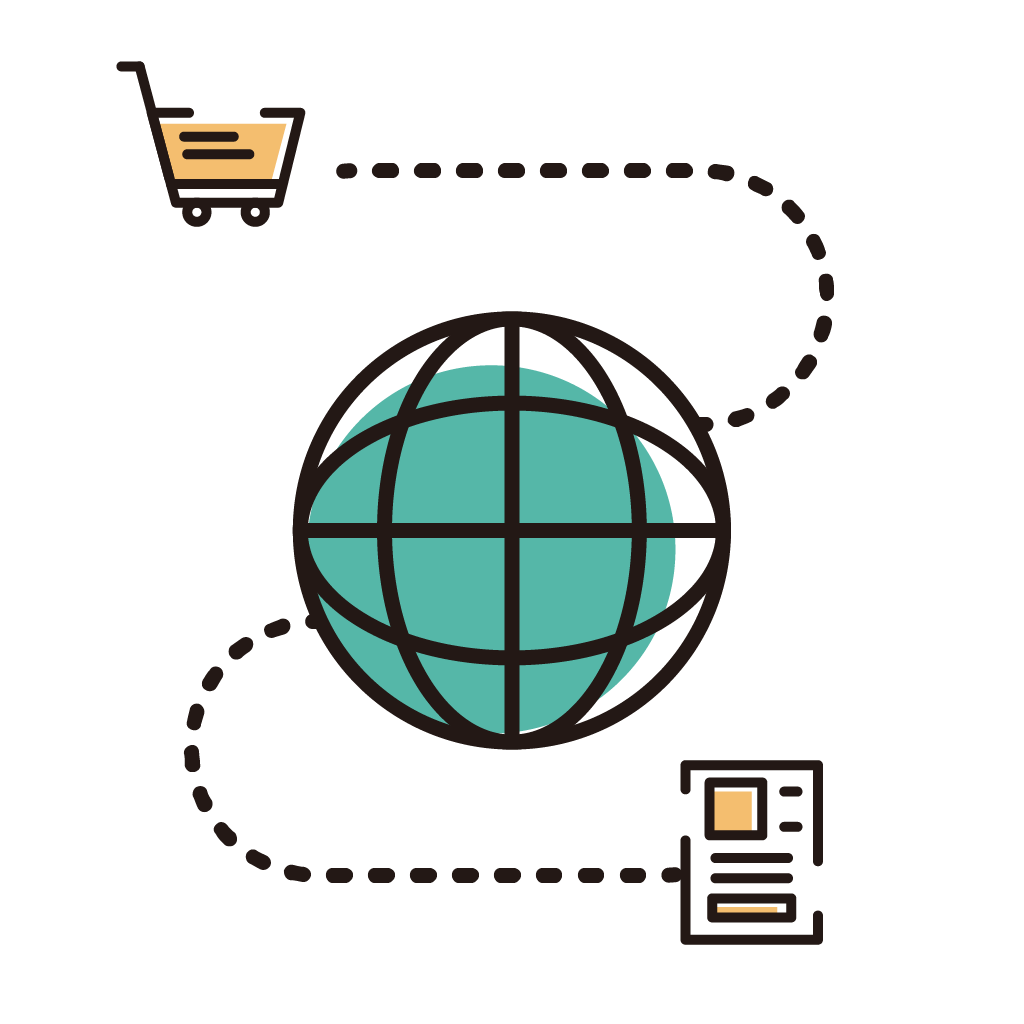
Due to the recent bomb attacks on merchant ships in the Red Sea, the world's four major shipping giants Maersk, Hapag-Lloyd, CMA CGM, and Mediterranean Shipping Company have all issued announcements to suspend all container transportation through the Red Sea. According to reports from The Paper and Finance News, COSCO Shipping, Orient Overseas Shipping, Evergreen Shipping, and ONE have also verbally informed them to suspend the transportation of goods on the Red Sea route.
A freight forwarder told Jiemian News that since last week, customers have been notified of the suspension of sailings one after another. Notices from COSCO Shipping, Orient Overseas, and Evergreen Shipping have not been received yet.
As a route carrying 12% of global trade transportation, the situation in the Red Sea region affects the entire shipping industry. In order to avoid safety risks, more and more ships are beginning to make detours, and the detours have further driven up freight rates. In addition, since December, the throughput of the Panama Canal has continued to decrease. The two major shipping "throats" are blocked at the same time, making the shipping market full of variables and putting the global supply chain in crisis.
Affected by this, the effective shipping capacity put into the market has been significantly reduced, freight rates have been rapidly pushed up, and the port shipping sector has surged. On December 18, COSCO Shipping Lines, Ningbo Ocean Shipping, and Jinjiang Shipping reached their daily limit, while COSCO Shipping Holdings and China Merchants Shipping increased by more than 5%.
The Asia-Europe route has a significant impact
As more and more shipping companies suspend sailings in the Red Sea, the shipping crisis caused by the regional situation has further emerged. Among them, the Asia-Europe route is the most obviously affected route.
The strategic location of the Red Sea is very important. The Red Sea area and the Bab el-Mandeb Strait are necessary places for the Suez Canal to pass through. Blockades in relevant areas will directly affect the passage of the Suez Canal.
The Suez Canal is located at the intersection of Europe, Asia, and Africa. It is the fastest and shortest transportation channel to and from the Indian Ocean and the Western Pacific. It shortens the route from Asia to European countries by 8,000-10,000 kilometers compared with the detour around the Cape of Good Hope. According to the official annual report, the Suez Canal as a whole carries nearly 15% of the total global maritime trade. In two-way navigation, the main types of cargo passing through the Suez Canal are container cargo and oil and products, accounting for 50.3% and 22.4% respectively.
Zheng Jingwen, deputy director of Shanghai International Shipping Research Center and International Shipping Research Institute, and others published a signed article in "Shipping Review" "The shipping market has encountered two major canal crises. What will be the follow-up trend of the container shipping market?" ” also pointed out that the situation depends on the situation of the Palestinian-Israeli conflict and the game of forces between the parties. The current speed and extent of the development of the incident have far exceeded market expectations. If the incident continues to unfold, it will seriously affect the transportation arrangements on the Asia-Europe route.
Zheng Jingwen also said in an interview with Jiemian News that the situation in the Red Sea region has a greater impact on the east-west European route, and the Asia-Europe route has received more attention. The freight volume and capacity investment of this route are relatively high.
From the perspective of front-line business, the suspension of sailings in the Red Sea region has had a severe impact on practitioners. Route experts for international logistics service providers told Jiemian News that as of today, OA Alliance (including CMA CGM, COSCO Shipping Lines, Evergreen Shipping, and Orient Overseas), THE Alliance (including Hapag-Lloyd, ONE, and Yang Ming Shipping) , HMM) The notices given by the two major shipping company alliances in China are "pending", that is, orders from China to the Red Sea this week are currently locked. Without more clear notification, these orders cannot be further arranged. .
The suspension of sailings will also bring a lot of troubles and disputes to the industry. Industry insiders told Jiemian News that the current suspension of sailings may involve multiple shipping companies sharing cabins. How to balance the interests of all parties, including how to arrange flights after the suspension, requires collaborative discussion among multiple parties.
Ships are diverted and transportation costs soar
After the traffic of the Red Sea and Suez Canal is affected, shipping companies need to adopt other alternatives. Circumventing the Cape of Good Hope in Africa, air transport, and China-Europe freight trains will all become options. However, these methods are without exception more expensive. At the same time, coupled with the short-term increase in demand, freight rates will also be pushed up.
Route experts from Shipqunar gave a more detailed explanation of this issue. He said that since the shipping company has not given a clear notice, it is difficult to judge the current situation. But from the perspective of where to transport it, if all routes to the Red Sea are suspended, there are probably several solutions: First, if it is passing through the Red Sea and the destination is Europe and other regions, it is most likely to go around the Cape of Good Hope. If the destination is the Red Sea region, air freight may be considered for high-value goods, but the cost will increase. A relatively more economical way is to transship from the inland of the Middle East and send it to the Red Sea area by tow truck and barge, or find a local ship in Dubai to transport it to the Red Sea.
"The shipping market has encountered two major canal crises. What will be the follow-up trend of the container shipping market?" "The article analyzed this and stated that bypassing the Cape of Good Hope will increase the transportation distance by nearly 3,100 nautical miles and the transportation time by 8-10 days. Ship turnover efficiency will decline again, and there may be a temporary shortage of market capacity, thus boosting market freight rates. Analysts at the Norwegian analysis agency Xeneta predict that depending on the scale and duration of the disruption to the Suez Canal route, shipping freight rates may increase by as much as 100%. The above-mentioned freight forwarder interviewed by Jiemian News also said that the price increase is certain, but there is no consensus on how much it will increase.
Kang Shuchun, president of the International Freight Forwarding Branch of the China Federation of Logistics and Purchasing, also told Jiemian News that 40-80 ships pass through the Red Sea Channel every day. If they bypass the Cape of Good Hope, the fuel cost alone will increase by hundreds of thousands of dollars. It is estimated that 15% of the world's current - 35% of ships will be affected.
Even so, many ships made an emergency U-turn after the attack in the Red Sea, and detouring around the Cape of Good Hope was almost the only option. In addition, data disclosed by the Suez Canal Authority shows that since November 19, 55 ships have been diverted through the Cape of Good Hope, and 2,128 ships have passed through the canal during the same period.
Regarding the two major alternatives of China-Europe freight trains and air freight, the article analyzed that, coupled with the factors that are currently in Europe's peak transportation season before Christmas and New Year, the increase in cargo volume will further increase air freight and China-Europe freight train transportation prices. On the other hand, as armed conflicts escalate, ship-related insurance costs will also increase significantly.
In addition to container ships, the Suez Canal is also an important energy transportation channel. Increased risks in related areas will also affect the price and convenience of energy transportation, thereby affecting the trend of ship energy prices.
Two major shipping "throats" face the crisis together
The difficulties in the shipping market do not end there. Another Panama Canal, which controls 6% of the world's ocean trade volume, is also in danger of shrinking navigation, and congestion is becoming increasingly severe.
As a golden waterway connecting the Pacific and Atlantic Oceans, the Panama Canal's drought crisis has begun this summer. Official data shows that the number of ships passing through the canal fell 31% year-on-year in November, and is expected to worsen next year. After the number of navigation ships dropped, long queues formed again at the Panama Canal anchorage, with more than a hundred ships waiting, and the average waiting time reached 30-60 hours (10-20 hours in the same period in 2022).
Due to the sharp increase in canal tolls, most liner companies such as Maersk, MSC, CMA CGM, COSCO Shipping Lines, and Hapag-Lloyd have added the "Panama Canal Low Water Surcharge", ranging from US$130-300/TEU. This has also become a factor in the increase in shipping costs.
Zheng Jingwen told Jiemian News that the Panama Canal mainly affects transportation in the East US and US Gulf regions. According to shipping data provider eeSea, 43 container ships will be rerouted from the Panama Canal in the coming weeks, with nine confirmed to be sailing through the Cape of Good Hope instead of the Suez Canal. Previously, the Suez Canal Authority proposed to reduce charges for liquid bulk carriers related to the East United States and the U.S. Gulf starting from July 1, with a maximum discount of up to 75%, attracting some liquid bulk ships to bypass the Suez Canal.
Zheng Jingwen further said that the main impact of the two canal crises is the impact on ship turnover efficiency, increased navigation costs, and longer transportation times, which will lead to rising freight rates. But what the impact will be depends on the situation in the Red Sea region. The analysis report of China Shipping also mentioned that interruption of key waterways, vessel congestion, and temporary changes in waterways will lead to a significant reduction in cargo arrival rates, triggering panic replenishment by cargo owners, and a sharp increase in the risk of freight rates rising during the channel blockade.
In fact, as early as March 2021, the Suez Canal was suspended for several days. Affected by this "black swan" event, the epidemic, and merchants stocking up goods in advance, global container freight rates continued to rise and reached their peak in the autumn of that year. Shipping companies' revenue and net profits both hit historical records.
Faced with the huge impact of shipping lanes on global trade, the industry is also paying attention to the construction of global shipping lanes, with the operation of the Arctic route becoming the focus.
The Arctic Route is a sea passage across the Arctic Ocean, connecting the Pacific and Atlantic Oceans. Under the influence of global warming, navigation time in the Arctic Ocean will become longer and longer, and the Arctic waterway is also considered a new route that may challenge the Suez Canal.

Shenzhen Xiangfeiyang International Logistics, with many years of experience in air transport, sea transport, and express delivery channels, has maintained close long-term cooperation with various airlines, shipping companies, and the four major express delivery companies. It adheres to the principle of people-oriented and integrity. The company has experienced port Customer service at the front and back ports patiently solves professional shipping problems in international logistics, efficiently tracks cargo information, and strives to build the Xiangfeiyang brand with self-operated and self-controlled air and sea delivery routes in the United States, Canada, the United Kingdom, and Europe. It has more than 10,000 square meters of overseas warehouses in the United States. There are more than 3,000 square meters of overseas warehouses in the UK. Based on the type of goods, product attributes, and timeliness requirements, the country will customize the most suitable logistics plan for customers, so that customers' goods can arrive on time at the scheduled time, and successfully save logistics for customers. Cost, our expertise, your peace of mind!























